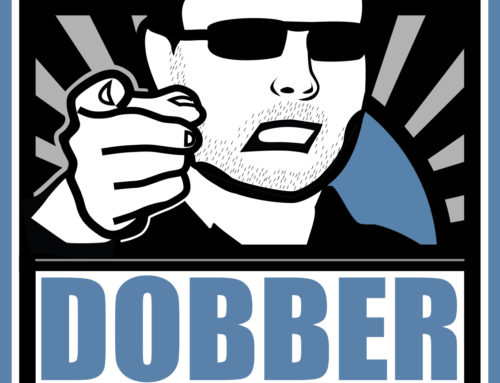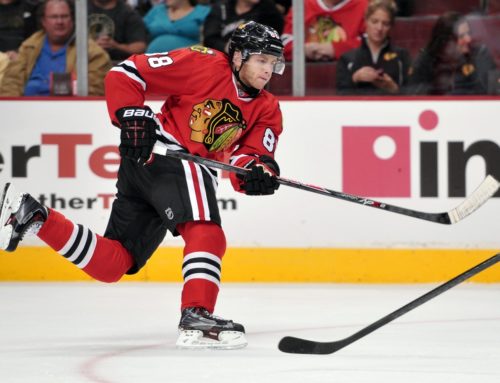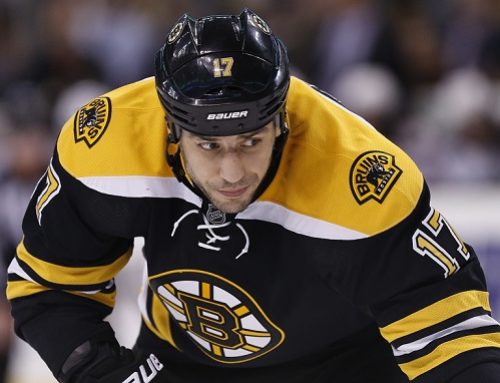Mindrust
Justin Goldman
2009-03-30

When you hear that a player was “rusty” in their first game back from an injury, what images start dancing in your head? Do you envision him lacking energy or a powerful first stride? Or maybe he’s mishandling the puck and making bad passes? Whatever it is, you know the tell-tale signs and they are fairly recognizable. But for goaltenders, the signs or “symptoms” are not quite as noticeable – especially if your name is Ryan Miller.
I have suffered an injury late in a regular season, so I know it’s significantly harder to return and play strong as opposed to being injured in October. The reasons are obvious – the pace is so much faster and feverish in March and April than at any other point in the season and the pressure is intense. Teams are fighting for the playoffs and need to win every game possible. And what “bubble” team needs their goalie more than Buffalo?
Because of the pressure continuing to build up in every game, timing and focus instantly become the biggest factors in a goalie successfully returning from an injury. Let’s also not forget that on top of the pressure to perform at the highest level instantly upon return, there’s also the physical pressure from more traffic and rough play in front of the net. Welcome back to the NHL Mr. Miller, would you like one of our complimentary barf bags on your flight?
Miller didn’t need one – he defied all odds by returning from a high ankle sprain without missing a single step. He made 33 saves on 36 shots against Toronto on Friday night and followed it up on Saturday by making 32 saves on 35 shots against Montreal. I was totally silenced by how well Miller did in both games because not only was he physically up for the challenge, mentally he showed not one sign of rust.
Now Nikolai Khabibulin returned from his groin injury a few weeks ago and lost three straight games and allowed 12 goals against during that stretch. Chicago lost two of those games by only one goal. He broke the streak by only having to make 14 saves on 15 shots in a 4-1 win over the Kings and then won his third straight game after making 28 saves in a 3-2 win over the Devils on Saturday night. It seemed like all was back to normal for the Bulin Wall.
But it all came tumbling down again last night against Vancouver in a 4-0 loss, one in which he only made 18 saves on 22 shots. So Chicago still has net issues on top of their inconsistency in the scoring department. Now the pressure has built to the point where Huet might get one more chance to turn things around, despite Quenneville’s decision to roll with Khabibulin for the rest of the season. It’s a tough choice, but that’s why he’s paid the big bucks. I say toss Huet in for one more game – it wouldn’t hurt anything and Khabibulin could use another kick in the rear.
What made Khabibulin “rusty” in the first place was the lack of consistent focus, the terrible placement of rebounds and the unfortunate mental lapses that resulted in goals. He just couldn’t keep up in his first three games; he was called for playing the puck outside the trapezoid and the timing of his movements and the inability to safely re-direct rebounds was not very efficient. Basically it looks like with only 35 games played, it will be nothing more than a frustrating season – for when was the last time Khabibulin played less than 40 games in a season anyways?
Again, Miller’s feats over the weekend were so impressive because he didn’t just lack the “rust” that most goalies (or any player) would have returning from a high-ankle injury, but he actually looks stronger. I watched his movements closely in the games. He seems rested, sharp and it showed in his vigorous movements. His understanding of what the Sabres needed from him as he rehabilitated must have been quite stressful, because their playoff hopes depend on his play. So what has been the main difference between Khabibulin’s slow start and Miller’s smooth ride?
Besides their different injuries and the fact it would take Khabibulin longer to return, it comes down to their mental preparation while out of the lineup. After doing some research, it turns out that Miller said publicly on Monday, March 16 that he would continue increasing his on-ice time through the week, even though he was unsure of a timetable for his return. So despite the fact he injured the same part of the ankle that a goalie relies on to butterfly efficiently, he still pushed hard in practice and mentally did everything he had to do to re-gain his timing in time for Friday’s return.
There’s a reason why Miller works so hard on his pre-game focus rituals – because it is a real x-factor in separating good games from great games. Those two or three extra saves in a game make all the difference in the world. The real key seems to be spending each minute in practice as if it were a game. A rusty body results from a rusty mind – if they stay focused and work hard in practice and goalies will most likely scale the walls of a serious injury.
Besides, wasn’t that extreme focus in practice what made Dominik Hasek so tough to beat in games? And one of the most honest guys to give an interview after a game, Tim Thomas mentioned on NESN that he didn’t feel any rust after playing in his first game in 10 days after making 45 saves against the Flyers. It’s no coincidence, folks.
WARD MAKES ‘CANES ABLE
Just a month ago it looked like Cam Ward was going to finish with a second straight season of mediocre numbers. He was horrible at times…but he was also magnificent at times, more specifically in March. Ward is one of the hottest goalies in the league right now, putting together a fantastic stretch that is eerily similar to last season.
Ward only allowed nine goals against in five straight wins to start the month of March in 2007-08 and ended up 9-2-1 overall with 23 goals against and one shutout. This year he allowed eight goals against in four straight wins to start the month of March and compiled an overall record of 10-1-2 with 26 goals against and one shutout.
While Ward has benefitted partially from a team playing strong in front of him, he is also in much better shape. I’m sure you remember that he lost close to 20 pounds a few years ago, so it looks like his current display of stamina and strength is a result of that season of intense off-season training. He admittedly has put some of that weight back on, but on a nightly basis he proclaims total comfort and no problems with energy.
I think Ward’s consistency has improved more than any other area of his game, and that is a result of the great coaching of Tom Barrasso. Along with his mental preparation and his attention to detail in practice, Ward is turning into a well-rounded and matured netminder. How about allowing two goals or fewer in 17 of his last 23 home games? Yeah, I think it’s safe to say Ward is on a very nice roll as Carolina continues to secure a playoff spot.
THE ROAD WARRIOR
Considering Chris Mason missed a few weeks in October with an appendectomy and didn’t win his first game of the season until November 20, I think it’s safe to say that Mason wins the award for the biggest second-half turnaround for goaltenders. March has been Mason’s best month, as he has gone 9-4-1 in 14 games and is only allowing two goals per game over the last six.
But now Mason’s real test is on the horizon, as Mason must duplicate his performances almost solely on the road for the rest of the season. The Blues play five of their last six games away from St. Louis and they will probably have to win four of them to safely make the playoffs. It’s tough to believe Mason is being stretched too thin right now, but how long before he starts to show signs of wear and tear? This is where durability and the ability to stay mentally focused while physically tired is a crucial factor in outlasting opponents and winning hockey games.





 FLA
FLA CHI
CHI NYR
NYR PIT
PIT L.A
L.A COL
COL CAR
CAR VGK
VGK MIN
MIN N.J
N.J CBJ
CBJ BOS
BOS

